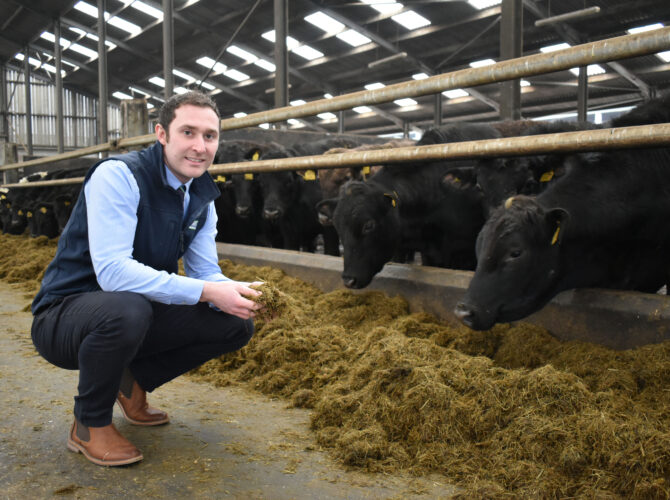As Winter-Feeding Commences – Get Your Feeding Strategy Correct!
14th October 2022

With the majority of cows housed in recent weeks due to a change in weather conditions, many farmers across Northern Ireland are keen to utilise silage within their milk production systems to help maximise herd performance during the coming months.
Fane Valley Feeds Technical team have been proactively testing forages throughout the year, with results demonstrating that forage quality would be lower than normal, especially in first cut silages. Subsequently feed levels will need adjusted accordingly to compensate for the lower energy and protein, in the higher fibre forages on farm.

Silage quality in Northern Ireland has been extremely variable for the 2022 season. ME contents between 2021 vs 2022 are down 0.6 MJ in first cut, and 0.3 MJ in second cut samples. In terms of milk production, this would equate to 1.3 litres difference in first cut & 0.7 litres in second cut silages.
The NDF figures are also quite variable from 2021 vs 2022, which demonstrates lower quality forages this year, with a lower digestibility value (D-Value), due to the higher stem-leaf ratio. Fane Valley Feeds will be advocating higher Maize and Wheat based rations to help break down the long fibre in the silage ensuring full feed utilisation.
The higher inclusion of additional starch in Fane Valley Feeds range this Winter will help the production of propionate produced in rumen, which is the main precursor required for glucose and hence milk production.
It’s important to get a representative sample from your pit face, and balance the diet accordingly with a feeding strategy. It’s imperative to fully utilise forage and concentrate feeding to maximise milk production and profit on your farm.
The role of live yeasts will also have an important part to play this winter as they have demonstrated a response of up to 2 litres of milk, when fed with fibrous silages. As a result, Fane Valley Feeds range of concentrates have elevated yeast levels to help compliment the forage facing farm businesses this winter. This year with lower protein silages, it is important to consider the source of protein provided in the concentrates, ensuring to complement the silage whilst providing essential amino acids.


